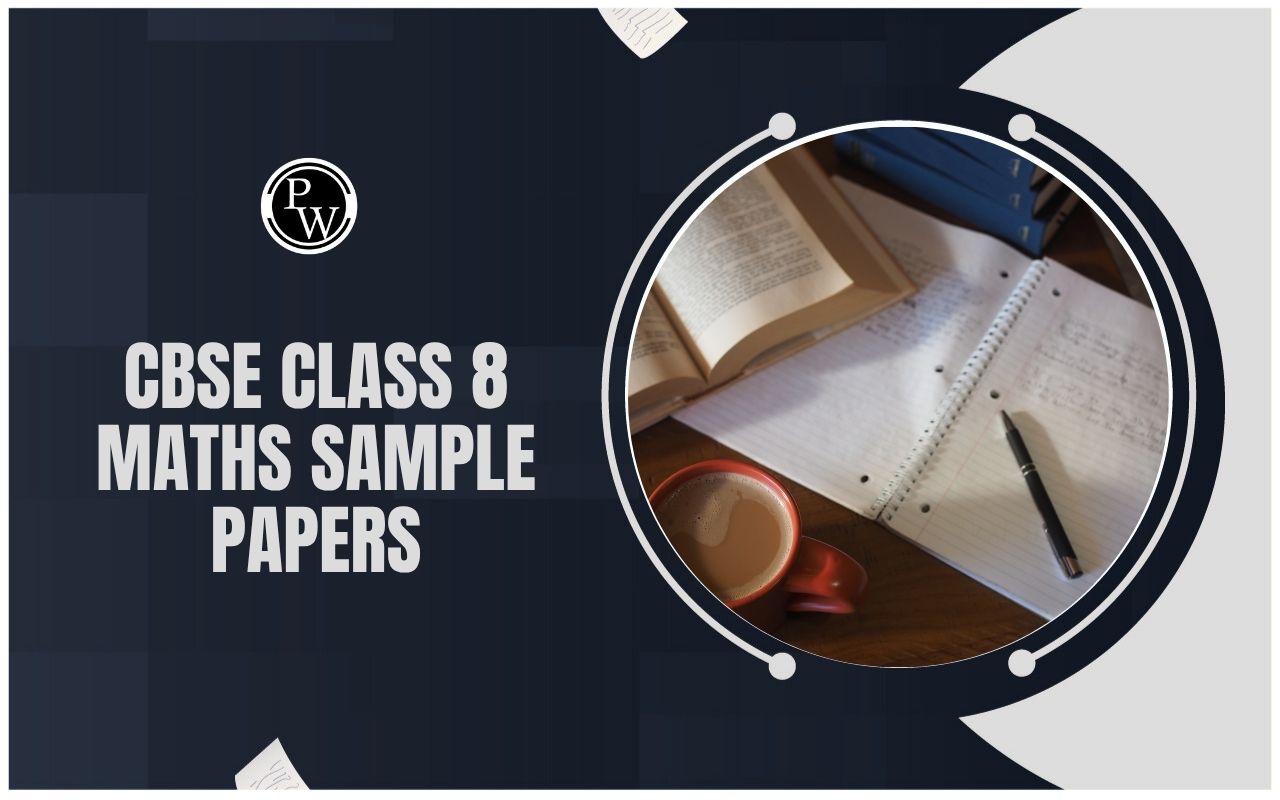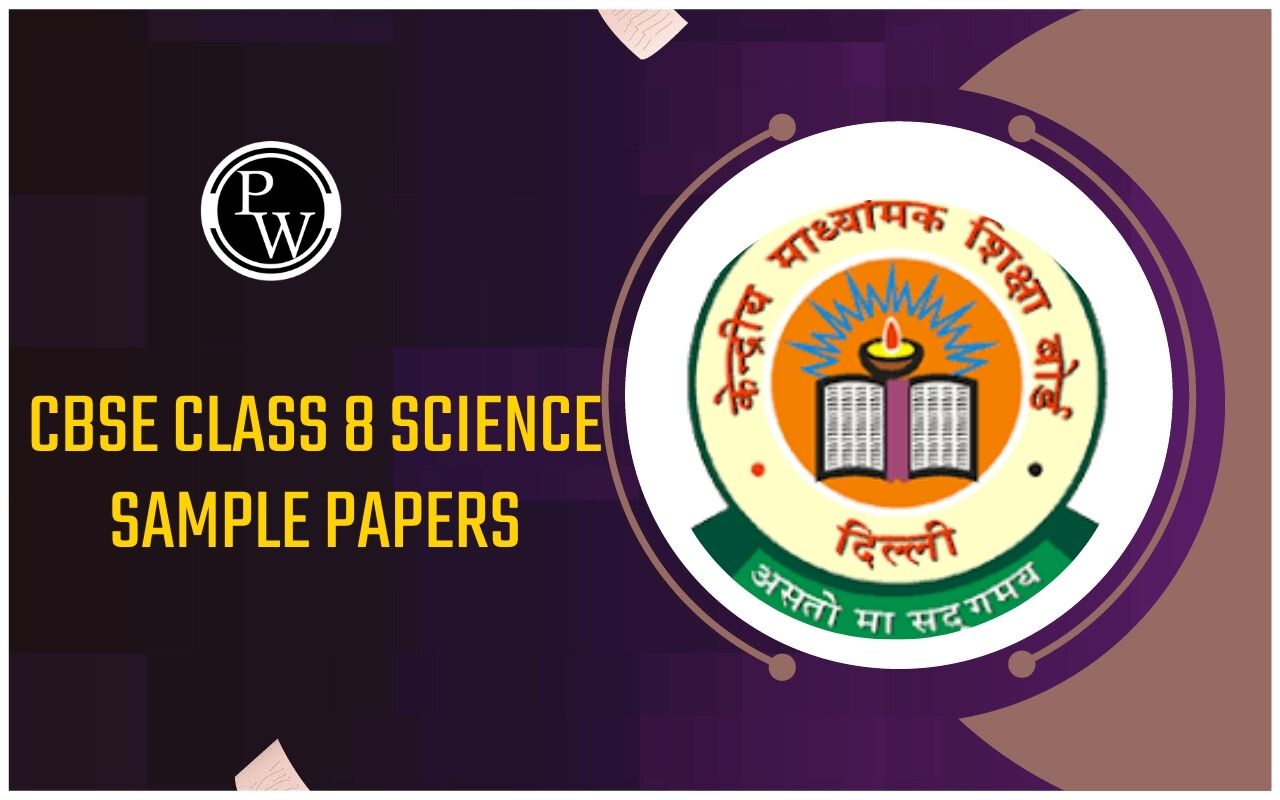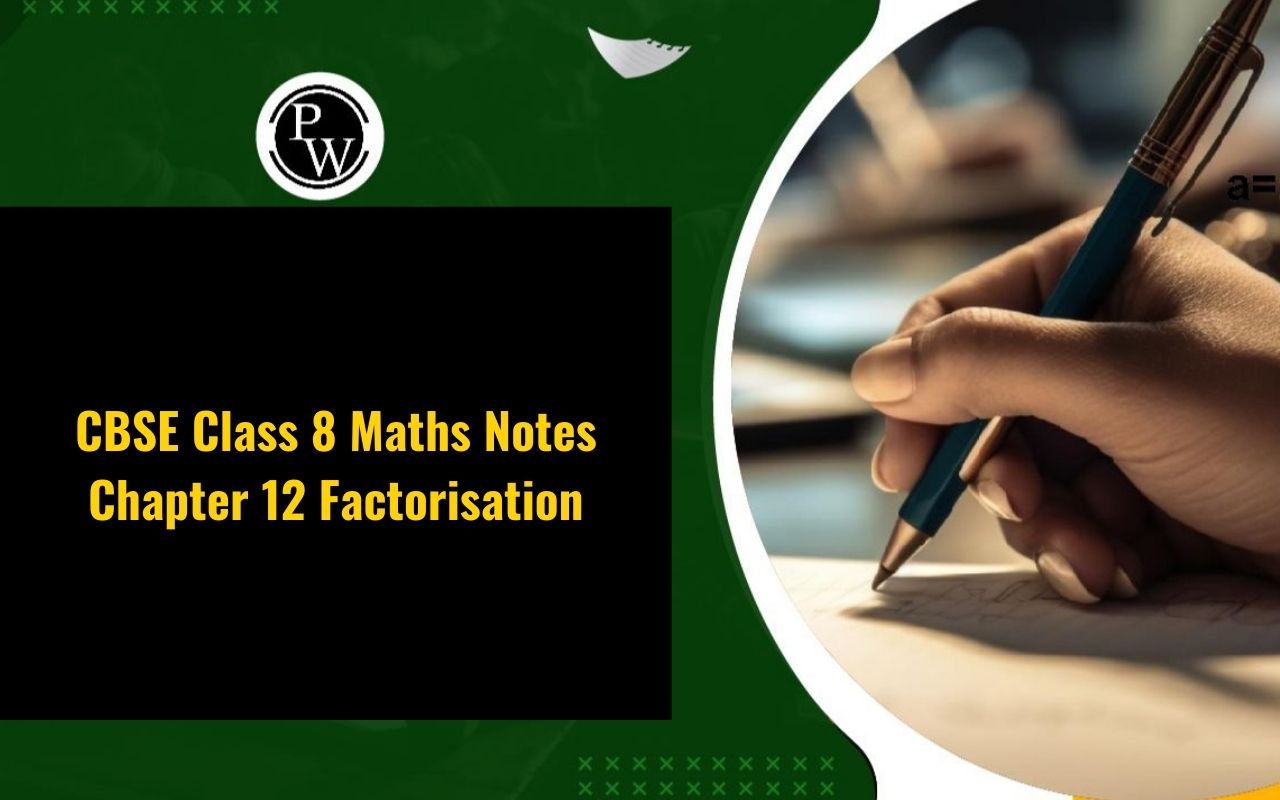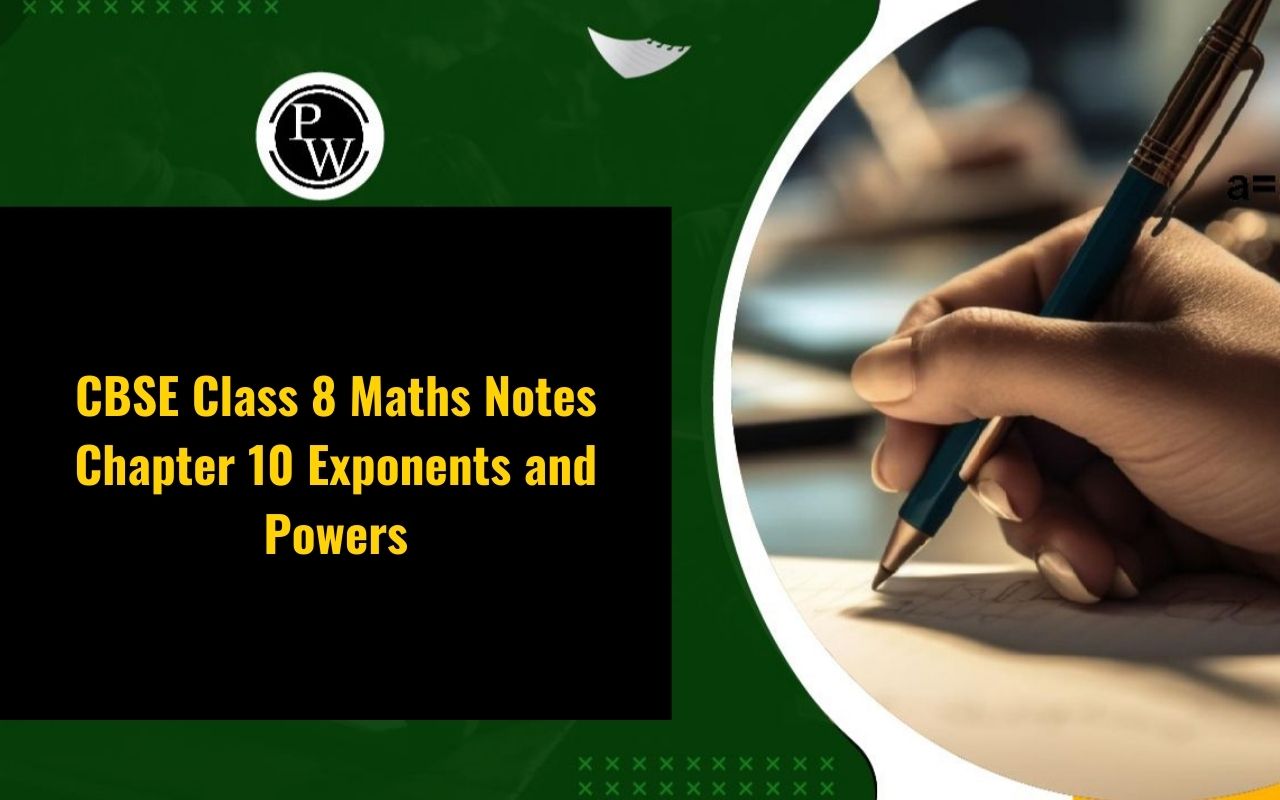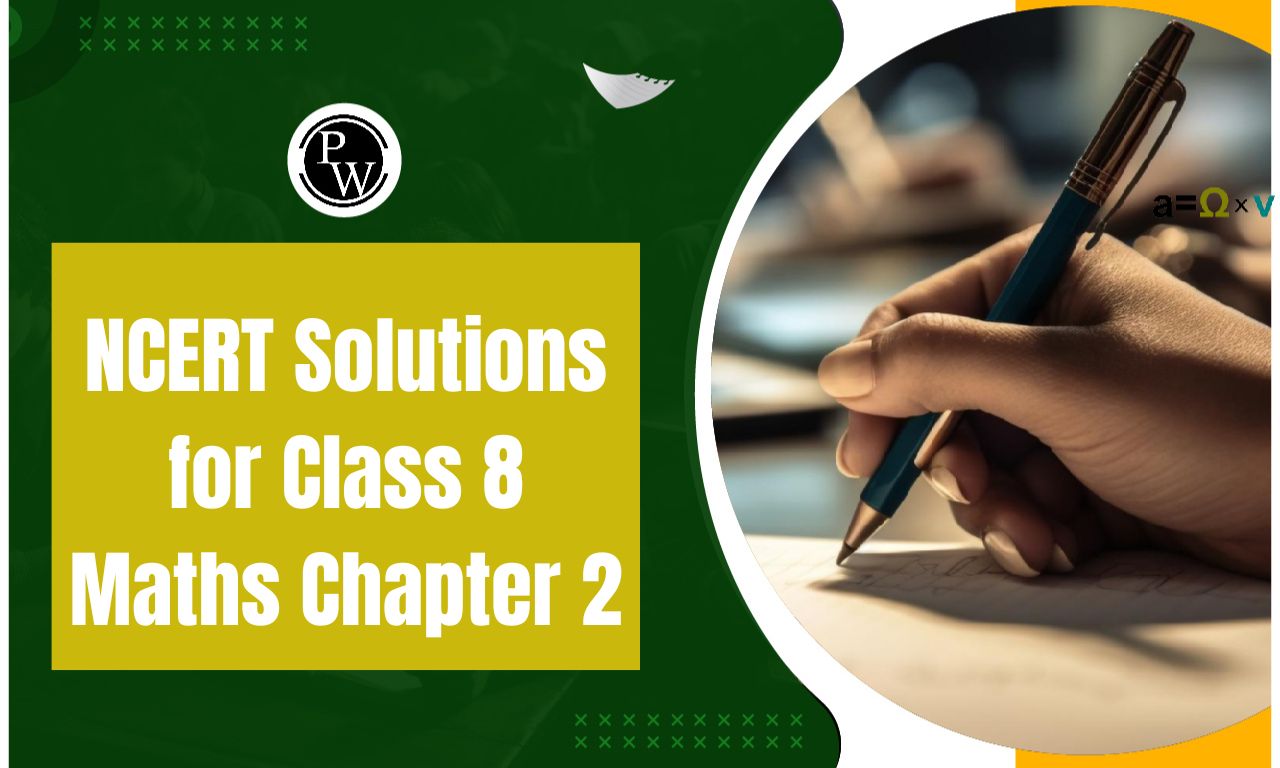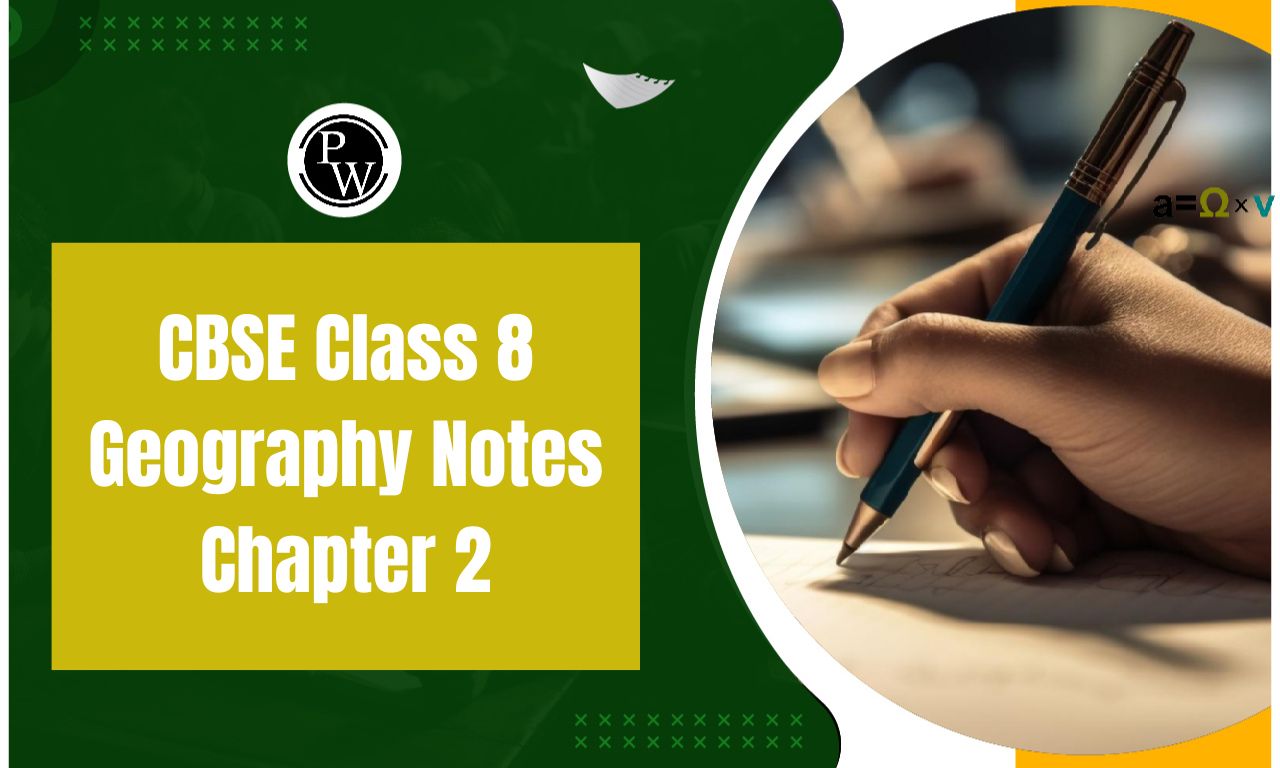
NCERT Solutions for Class 8 Maths Chapter 7: NCERT Solutions for Class 8 Maths Chapter 7, "Cubes and Cube Roots," help students understand how cubes and cube roots work. In this chapter, students learn about what a cube is, how to find the cube of a number, and how to find the cube root of a number.
It covers methods like prime factorization and estimation to find cube roots. These solutions explain everything step by step, making it easier for students to learn and solve problems. By using these solutions, students can improve their math skills and feel more confident in handling cube-related questions.NCERT Solutions for Class 8 Maths Chapter 7 Cubes and Cube Roots Overview
The NCERT Solutions for Class 8 Maths Chapter 7, "Cubes and Cube Roots," are created by subject experts of Physics Wallah. Each solution is designed to make learning easy, so students can solve problems confidently. These solutions are a great way for students to improve their math skills and feel more comfortable with cube-related questions.NCERT Solutions for Class 8 Maths Chapter 7 PDF
You can find the PDF link for NCERT Solutions for Class 8 Maths Chapter 7, which covers cubes and cube roots, below. It helps students learn how to find cubes of numbers, determine cube roots using methods like prime factorization, and solve related problems effectively. Accessing this PDF is useful for students in understanding these mathematical concepts better and improving their skills in solving cube-related problems.NCERT Solutions for Class 8 Maths Chapter 7 PDF
NCERT Solutions for Class 8 Maths Chapter 7 Cubes and Cube Roots
Here we have provided NCERT Solutions for Class 8 Maths Chapter 7 Cubes and Cube Roots for the ease of students so that they can prepare better for their exams.NCERT Solutions for Class 8 Maths Chapter 7 Cubes and Cube Roots Exercise 7.1 Page: 114
1. Which of the following numbers are not perfect cubes?(i) 216
Solution:
By resolving 216 into a prime factor, 216 = 2×2×2×3×3×3
By grouping the factors in triplets of equal factors, 216 = (2×2×2)×(3×3×3)
Here, 216 can be grouped into triplets of equal factors,
∴ 216 = (2×3) = 6
Hence, 216 is the cube of 6.
216 = 2×2×2×3×3×3
By grouping the factors in triplets of equal factors, 216 = (2×2×2)×(3×3×3)
Here, 216 can be grouped into triplets of equal factors,
∴ 216 = (2×3) = 6
Hence, 216 is the cube of 6.
(ii) 128
Solution:
By resolving 128 into a prime factor, 128 = 2×2×2×2×2×2×2
By grouping the factors in triplets of equal factors, 128 = (2×2×2)×(2×2×2)×2
Here, 128 cannot be grouped into triplets of equal factors, and we are left with one factor: 2.
∴ 128 is not a perfect cube.
128 = 2×2×2×2×2×2×2
By grouping the factors in triplets of equal factors, 128 = (2×2×2)×(2×2×2)×2
Here, 128 cannot be grouped into triplets of equal factors, and we are left with one factor: 2.
∴ 128 is not a perfect cube.
(iii) 1000
Solution:
By resolving 1000 into prime factor, 1000 = 2×2×2×5×5×5
By grouping the factors in triplets of equal factors, 1000 = (2×2×2)×(5×5×5)
Here, 1000 can be grouped into triplets of equal factors.
∴ 1000 = (2×5) = 10
Hence, 1000 is the cube of 10.
1000 = 2×2×2×5×5×5
By grouping the factors in triplets of equal factors, 1000 = (2×2×2)×(5×5×5)
Here, 1000 can be grouped into triplets of equal factors.
∴ 1000 = (2×5) = 10
Hence, 1000 is the cube of 10.
(iv) 100
Solution:
By resolving 100 into a prime factor, 100 = 2×2×5×5
Here, 100 cannot be grouped into triplets of equal factors.
∴ 100 is not a perfect cube.
100 = 2×2×5×5
Here, 100 cannot be grouped into triplets of equal factors.
∴ 100 is not a perfect cube.
(v) 46656
Solution:
By resolving 46656 into prime factor, 46656 = 2×2×2×2×2×2×3×3×3×3×3×3
By grouping the factors in triplets of equal factors, 46656 = (2×2×2)×(2×2×2)×(3×3×3)×(3×3×3)
Here, 46656 can be grouped into triplets of equal factors,
∴ 46656 = (2×2×3×3) = 36
Hence, 46656 is the cube of 36.
2. Find the smallest number by which each of the following numbers must be multiplied to obtain a perfect cube.
46656 = 2×2×2×2×2×2×3×3×3×3×3×3
By grouping the factors in triplets of equal factors, 46656 = (2×2×2)×(2×2×2)×(3×3×3)×(3×3×3)
Here, 46656 can be grouped into triplets of equal factors,
∴ 46656 = (2×2×3×3) = 36
Hence, 46656 is the cube of 36.
2. Find the smallest number by which each of the following numbers must be multiplied to obtain a perfect cube.
(i) 243
Solution:
By resolving 243 into a prime factor, 243 = 3×3×3×3×3
By grouping the factors in triplets of equal factors, 243 = (3×3×3)×3×3
Here, 3 cannot be grouped into triplets of equal factors.
∴ We will multiply 243 by 3 to get the perfect cube.
243 = 3×3×3×3×3
By grouping the factors in triplets of equal factors, 243 = (3×3×3)×3×3
Here, 3 cannot be grouped into triplets of equal factors.
∴ We will multiply 243 by 3 to get the perfect cube.
(ii) 256
Solution:
By resolving 256 into a prime factor, 256 = 2×2×2×2×2×2×2×2
By grouping the factors in triplets of equal factors, 256 = (2×2×2)×(2×2×2)×2×2
Here, 2 cannot be grouped into triplets of equal factors.
∴ We will multiply 256 by 2 to get the perfect cube.
256 = 2×2×2×2×2×2×2×2
By grouping the factors in triplets of equal factors, 256 = (2×2×2)×(2×2×2)×2×2
Here, 2 cannot be grouped into triplets of equal factors.
∴ We will multiply 256 by 2 to get the perfect cube.
(iii) 72
Solution:
By resolving 72 into a prime factor, 72 = 2×2×2×3×3
By grouping the factors in triplets of equal factors, 72 = (2×2×2)×3×3
Here, 3 cannot be grouped into triplets of equal factors.
∴ We will multiply 72 by 3 to get the perfect cube.
72 = 2×2×2×3×3
By grouping the factors in triplets of equal factors, 72 = (2×2×2)×3×3
Here, 3 cannot be grouped into triplets of equal factors.
∴ We will multiply 72 by 3 to get the perfect cube.
(iv) 675
Solution:
By resolving 675 into a prime factor, 675 = 3×3×3×5×5
By grouping the factors in triplets of equal factors, 675 = (3×3×3)×5×5
Here, 5 cannot be grouped into triplets of equal factors.
∴ We will multiply 675 by 5 to get the perfect cube.
675 = 3×3×3×5×5
By grouping the factors in triplets of equal factors, 675 = (3×3×3)×5×5
Here, 5 cannot be grouped into triplets of equal factors.
∴ We will multiply 675 by 5 to get the perfect cube.
(v) 100
Solution:
By resolving 100 into a prime factor, 100 = 2×2×5×5
Here, 2 and 5 cannot be grouped into triplets of equal factors.
∴ We will multiply 100 by (2×5) 10 to get the perfect cube.
3. Find the smallest number by which each of the following numbers must be divided to obtain a perfect cube.
100 = 2×2×5×5
Here, 2 and 5 cannot be grouped into triplets of equal factors.
∴ We will multiply 100 by (2×5) 10 to get the perfect cube.
3. Find the smallest number by which each of the following numbers must be divided to obtain a perfect cube.
(i) 81
Solution:
By resolving 81 into a prime factor, 81 = 3×3×3×3
By grouping the factors in triplets of equal factors, 81 = (3×3×3)×3
Here, 3 cannot be grouped into triplets of equal factors.
∴ We will divide 81 by 3 to get the perfect cube.
81 = 3×3×3×3
By grouping the factors in triplets of equal factors, 81 = (3×3×3)×3
Here, 3 cannot be grouped into triplets of equal factors.
∴ We will divide 81 by 3 to get the perfect cube.
(ii) 128
Solution:
By resolving 128 into a prime factor, 128 = 2×2×2×2×2×2×2
By grouping the factors in triplets of equal factors, 128 = (2×2×2)×(2×2×2)×2
Here, 2 cannot be grouped into triplets of equal factors.
∴ We will divide 128 by 2 to get the perfect cube.
128 = 2×2×2×2×2×2×2
By grouping the factors in triplets of equal factors, 128 = (2×2×2)×(2×2×2)×2
Here, 2 cannot be grouped into triplets of equal factors.
∴ We will divide 128 by 2 to get the perfect cube.
(iii) 135
Solution:
By resolving 135 into prime factor, 135 = 3×3×3×5
By grouping the factors in triplets of equal factors, 135 = (3×3×3)×5
Here, 5 cannot be grouped into triplets of equal factors.
∴ We will divide 135 by 5 to get the perfect cube.
135 = 3×3×3×5
By grouping the factors in triplets of equal factors, 135 = (3×3×3)×5
Here, 5 cannot be grouped into triplets of equal factors.
∴ We will divide 135 by 5 to get the perfect cube.
(iv) 192
Solution:
By resolving 192 into a prime factor, 192 = 2×2×2×2×2×2×3
By grouping the factors in triplets of equal factors, 192 = (2×2×2)×(2×2×2)×3
Here, 3 cannot be grouped into triplets of equal factors.
∴ We will divide 192 by 3 to get the perfect cube.
192 = 2×2×2×2×2×2×3
By grouping the factors in triplets of equal factors, 192 = (2×2×2)×(2×2×2)×3
Here, 3 cannot be grouped into triplets of equal factors.
∴ We will divide 192 by 3 to get the perfect cube.
(v) 704
Solution:
By resolving 704 into a prime factor, 704 = 2×2×2×2×2×2×11
By grouping the factors in triplets of equal factors, 704 = (2×2×2)×(2×2×2)×11
Here, 11 cannot be grouped into triplets of equal factors.
∴ We will divide 704 by 11 to get the perfect cube.
704 = 2×2×2×2×2×2×11
By grouping the factors in triplets of equal factors, 704 = (2×2×2)×(2×2×2)×11
Here, 11 cannot be grouped into triplets of equal factors.
∴ We will divide 704 by 11 to get the perfect cube.
4. Parikshit makes a cuboid of plasticine with sides 5 cm, 2 cm, and 5 cm. How many such cuboids will he need to form a cube?
Solution:
Given the sides of the cube are 5 cm, 2 cm and 5 cm. ∴ Volume of cube = 5×2×5 = 50 50 = 2×5×5
Here, 2 , 5 and 5 cannot be grouped into triplets of equal factors.
∴ We will multiply 50 by (2×2×5) 20 to get the perfect cube. Hence, 20 cuboids are needed.
50 = 2×5×5
Here, 2 , 5 and 5 cannot be grouped into triplets of equal factors.
∴ We will multiply 50 by (2×2×5) 20 to get the perfect cube. Hence, 20 cuboids are needed.
NCERT Solutions for Class 8 Maths Chapter 7 Cubes and Cube Roots Exercise 7.2 Page: 116
1. Find the cube root of each of the following numbers by the prime factorisation method.
(i) 64
Solution:
64 = 2×2×2×2×2×2 By grouping the factors in triplets of equal factors, 64 = (2×2×2)×(2×2×2) Here, 64 can be grouped into triplets of equal factors. ∴ 64 = 2×2 = 4 Hence, 4 is the cube root of 64.(ii) 512
Solution:
512 = 2×2×2×2×2×2×2×2×2 By grouping the factors in triplets of equal factors, 512 = (2×2×2)×(2×2×2)×(2×2×2) Here, 512 can be grouped into triplets of equal factors. ∴ 512 = 2×2×2 = 8 Hence, 8 is the cube root of 512.(iii) 10648
Solution:
10648 = 2×2×2×11×11×11 By grouping the factors in triplets of equal factors, 10648 = (2×2×2)×(11×11×11) Here, 10648 can be grouped into triplets of equal factors. ∴ 10648 = 2 ×11 = 22 Hence, 22 is the cube root of 10648.(iv) 27000
Solution:
27000 = 2×2×2×3×3×3×3×5×5×5 By grouping the factors in triplets of equal factors, 27000 = (2×2×2)×(3×3×3)×(5×5×5) Here, 27000 can be grouped into triplets of equal factors. ∴ 27000 = (2×3×5) = 30 Hence, 30 is the cube root of 27000.(v) 15625
Solution:
15625 = 5×5×5×5×5×5 By grouping the factors in triplets of equal factors, 15625 = (5×5×5)×(5×5×5) Here, 15625 can be grouped into triplets of equal factors. ∴ 15625 = (5×5) = 25 Hence, 25 is the cube root of 15625.(vi) 13824
Solution:
13824 = 2×2×2×2×2×2×2×2×2×3×3×3 By grouping the factors in triplets of equal factors, 13824 = (2×2×2)×(2×2×2)×(2×2×2)×(3×3×3) Here, 13824 can be grouped into triplets of equal factors. ∴ 13824 = (2×2× 2×3) = 24 Hence, 24 is the cube root of 13824.(vii) 110592
Solution:
110592 = 2×2×2×2×2×2×2×2×2×2×2×2×3×3×3 By grouping the factors in triplets of equal factors, 110592 = (2×2×2)×(2×2×2)×(2×2×2)×(2×2×2)×(3×3×3) Here, 110592 can be grouped into triplets of equal factors. ∴ 110592 = (2×2×2×2 × 3) = 48 Hence, 48 is the cube root of 110592.(viii) 46656
Solution:
46656 = 2×2×2×2×2×2×3×3×3×3×3×3 By grouping the factors in triplets of equal factors, 46656 = (2×2×2)×(2×2×2)×(3×3×3)×(3×3×3) Here, 46656 can be grouped into triplets of equal factors. ∴ 46656 = (2×2×3×3) = 36 Hence, 36 is the cube root of 46656.(ix) 175616
Solution:
175616 = 2×2×2×2×2×2×2×2×2×7×7×7 By grouping the factors in triplets of equal factors, 175616 = (2×2×2)×(2×2×2)×(2×2×2)×(7×7×7) Here, 175616 can be grouped into triplets of equal factors. ∴ 175616 = (2×2×2×7) = 56 Hence, 56 is the cube root of 175616.(x) 91125
Solution:
91125 = 3×3×3×3×3×3×3×5×5×5 By grouping the factors in triplets of equal factors, 91125 = (3×3×3)×(3×3×3)×(5×5×5) Here, 91125 can be grouped into triplets of equal factors. ∴ 91125 = (3×3×5) = 45 Hence, 45 is the cube root of 91125.2. State true or false.
(i) Cube of any odd number is even.
Solution:
False(ii) A perfect cube does not end with two zeros.
Solution:
True(iii) If the cube of a number ends with 5, then its cube ends with 25.
Solution:
False(iv) There is no perfect cube which ends with 8.
Solution:
False(v) The cube of a two-digit number may be a three-digit number.
Solution:
False(vi) The cube of a two-digit number may have seven or more digits.
Solution:
False(vii) The cube of a single-digit number may be a single-digit number.
Solution:
True3. You are told that 1,331 is a perfect cube. Can you guess without factorisation what its cube root is? Similarly, guess the cube roots of 4913, 12167, and 32768.
Solution:
(i) By grouping the digits, we get 1 and 331 We know that since the unit digit of the cube is 1, the unit digit of the cube root is 1. ∴ We get 1 as the unit digit of the cube root of 1331. The cube of 1 matches the number of the second group. ∴ The ten’s digit of our cube root is taken as the unit place of the smallest number. We know that the unit’s digit of the cube of a number having digit as unit’s place 1 is 1. ∴ ∛1331 = 11 (ii) By grouping the digits, we get 4 and 913 We know that since the unit digit of the cube is 3, the unit digit of the cube root is 7. ∴ we get 7 as the unit digit of the cube root of 4913. We know 1 3 = 1 and 2 3 = 8 , 1 > 4 > 8 Thus, 1 is taken as the tens digit of the cube root. ∴ ∛4913 = 17 (iii) By grouping the digits, we get 12 and 167. We know that since the unit digit of the cube is 7, the unit digit of the cube root is 3. ∴ 3 is the unit digit of the cube root of 12167 We know 2 3 = 8 and 3 3 = 27 , 8 > 12 > 27 Thus, 2 is taken as the tens digit of the cube root. ∴ ∛12167= 23 (iv) By grouping the digits, we get 32 and 768. We know that since the unit digit of the cube is 8, the unit digit of the cube root is 2. ∴ 2 is the unit digit of the cube root of 32768. We know 3 3 = 27 and 4 3 = 64 , 27 > 32 > 64 Thus, 3 is taken as the tens digit of the cube root. ∴ ∛32768= 32NCERT Solutions for Class 8 Maths Chapter 7 – Cubes and Cube Roots Summary
In NCERT Solutions for Class 8 Maths Chapter 7, "Cubes and Cube Roots," provided by Physics Wallah you'll find answers to all the questions in the chapter. The chapter includes two exercises: Exercise 7.1 focuses on Cubes, while Exercise 7.2 deals with Cube Roots. Here’s a summary of what the chapter covers:- Hardy-Ramanujan Numbers: Examples like 1729, 4104, and 13832 can be expressed as the sum of two cubes in two different ways.
- Cube Numbers: These are numbers obtained when a number is multiplied by itself three times.
- Perfect Cubes: A number is considered a perfect cube if, in its prime factorization, each factor appears three times.
Benefits of NCERT Solutions for Class 8 Maths Chapter 7
- Comprehensive Understanding: These solutions provide clear explanations and step-by-step methods for understanding cubes, cube roots, and related concepts.
- Structured Learning: Organized into exercises, the solutions cover different aspects such as finding cubes, determining cube roots using methods like prime factorization, and solving practical problems.
- Improved Problem-Solving Skills: By practicing with these solutions, students can enhance their ability to solve mathematical problems related to cubes and cube roots effectively.
- Concept Clarity: The solutions clarify complex concepts in a simple manner, making it easier for students to grasp and apply them.
- Exam Preparation: Aligned with the NCERT curriculum, these solutions help students prepare comprehensively for exams, ensuring they are well-versed in the chapter’s topics.
- Enhanced Confidence: By using these solutions to tackle exercises and questions, students can build confidence in their mathematical abilities.
NCERT Solutions for Class 8 Maths Chapter 7 FAQs
What are cube numbers?
How do you find the cube root of a number?
Why is understanding cubes and cube roots important?
How can NCERT Solutions help in learning cubes and cube roots?
What are some interesting properties of cube numbers?


